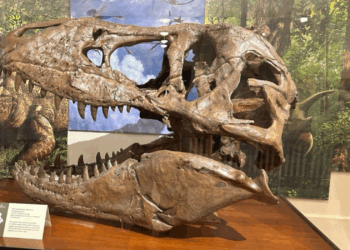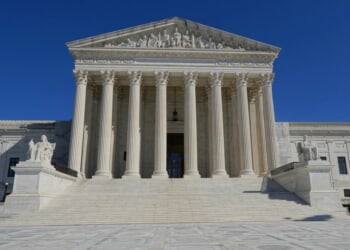President Trump’s “comprehensive internal review of selected Smithsonian museums and exhibitions,” is raising alarms about censorship, revisionism, and so forth. People may not be aware of the back story, as outlined by Roger Kimball at American Greatness.
“In recent years, the Smithsonian has gradually morphed from an institution for the ‘increase & diffusion of knowledge among men’ into a woke repository of progressive, anti-American shibboleths,” explains Kimball, author of Tenured Radicals. “Among other things, the colonoscopy-like review will counter the pervasive assumption that the history of the United States is tantamount to a history of oppression.” That was exactly what this writer discovered way back in the Clinton Era.
See “Institution with an Attitude,” in the Washington Post, published on October 13, 1996. Even then, the museums and exhibits gave the impression that history was a chronicle of oppression. As the left has it, that was the case until the arrival of enlightened types such as Karl Marx, whose contribution to economics, as Thomas Sowell explained in Marxism: Philosophy and Economics, was virtually zero.
As it happens, Karl Marx was a true believer in quackery such as phrenology, and all that implies. See Karl Marx, Racist by Nathaniel Weyl, the former Communist who shows up in The Man Who Invented Conservatism, Daniel Flynn’s new book on former Communist Frank Meyer.
These men regarded Marxist-Leninist states such as the Union of Soviet Socialist Republics (USSR) as the worst oppressors in history. That record is charted in the Museum of Communism in the Czech Republic, which the Soviet Union invaded in 1968 to quash the “Prague Spring.” See also the Victims of Communism Museum in Washington, D.C.
By contrast, the “1619 Project,” by writers at the New York Times, portrays the USA as oppressive and racist right from the start.
By contrast, the “1619 Project,” by writers at the New York Times, portrays the USA as oppressive and racist right from the start. The project got plenty of publicity, but the Times’ record of dealing with history has escaped notice. (RELATED: Celebrating Independence From Anti-American History Propaganda)
In the early 1930s, Stalin’s forced famine in Ukraine claimed from 4-7 million victims, by some estimates, many more. The New York Times’ Moscow correspondent, Walter Duranty, proclaimed there was no famine at all. See Stalin’s Apologist: The New York Times’s Man in Moscow, by S.J. Taylor. So the Times, touted as the newspaper of record, is hardly a reliable interpreter of history.
As Phillip P. Magness shows in The 1619 Project Myth, the Times’ project is riddled with partisan hysteria, pseudo-scholarship, and blatant errors of fact. An outright assault on American history, the project deploys an anti-capitalist ideological agenda to make the case for tearing down America’s free-market economy. After encountering F.A. Hayek’s The Road To Serfdom, Frank Meyer took up the free-market cause:
The fact that the capitalist makes goods for an unknown market implies democracy — he must have the democratic vote of the consumer. Under a planned economy the leaders must treat consumers like a father treats his children. People must be directed, must be told what to eat, what to eat, what schools to go to. And if they are not persuaded — and in a traditionally democratic country they cannot be persuaded — they must be coerced. That is totalitarianism.
Meyer, who passed away in 1972, would be surprised at the portrayal of U.S. history as a chronicle of oppression, particularly from a taxpayer-supported institution like the Smithsonian. As a matter of course, museums should treat slavery, segregation, and such with full accuracy and detail. On the other hand, they should not deploy history as a political weapon.
A report on the Smithsonian, due in 2026, will include “museum-specific assessments, institutional trends, and constructive recommendations for future exhibition strategy.” As Trump likes to say, we’ll have to see what happens.
READ MORE from Lloyd Billingsley:
To Harvard and Back with Julie Su
Lloyd Billingsley is a policy fellow at the Independent Institute in Oakland, Calif.



![Steak ’n Shake Mocks Cracker Barrel Over Identity-Erasing Rebrand [WATCH]](https://www.right2024.com/wp-content/uploads/2025/08/Steak-n-Shake-Mocks-Cracker-Barrel-Over-Identity-Erasing-Rebrand-WATCH-350x250.jpg)



![Soros Network, Others Behind LA Riots [WATCH]](https://www.right2024.com/wp-content/uploads/2025/06/Soros-Network-Others-Behind-LA-Riots-WATCH-350x250.jpg)
![Human Trafficking Expert Details Horrific Biden Admin Endangerment of Migrant Kids [WATCH]](https://www.right2024.com/wp-content/uploads/2025/07/Human-Trafficking-Expert-Details-Horrific-Biden-Admin-Endangerment-of-Migrant-350x250.jpg)






